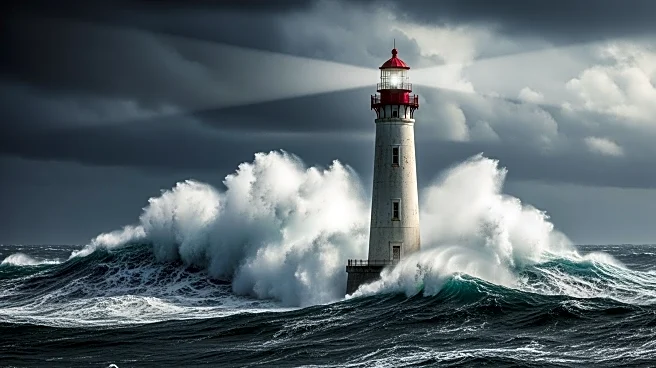What's Happening?
Researchers are delving into the complexities of ocean waves through the lens of Euler’s equations, which describe the flow of water and other fluids. These equations, first formulated nearly 300 years
ago, are notoriously difficult to solve, yet they hold the key to understanding phenomena like tsunamis and whirlpools. Mathematicians have made strides in extracting solutions from these equations, providing insights into the behavior of ocean waves. The study is led by Alberto Maspero at the International School for Advanced Studies in Trieste, Italy, where the unique local wind patterns offer a natural laboratory for observing wave dynamics.
Why It's Important?
Understanding the mathematical underpinnings of ocean waves is crucial for predicting natural disasters such as tsunamis, which can have devastating impacts on coastal communities. Improved models can enhance early warning systems, potentially saving lives and reducing economic losses. The research also contributes to the broader field of fluid dynamics, with applications in engineering, environmental science, and climate studies. As climate change affects ocean patterns, these insights become increasingly valuable for adapting to new environmental challenges.
Beyond the Headlines
The study of ocean waves through Euler’s equations not only advances scientific knowledge but also poses philosophical questions about the predictability and complexity of natural systems. The difficulty in solving these equations reflects broader challenges in understanding chaotic systems, which can have implications for fields ranging from meteorology to economics. This research underscores the importance of interdisciplinary approaches in tackling complex global issues.













